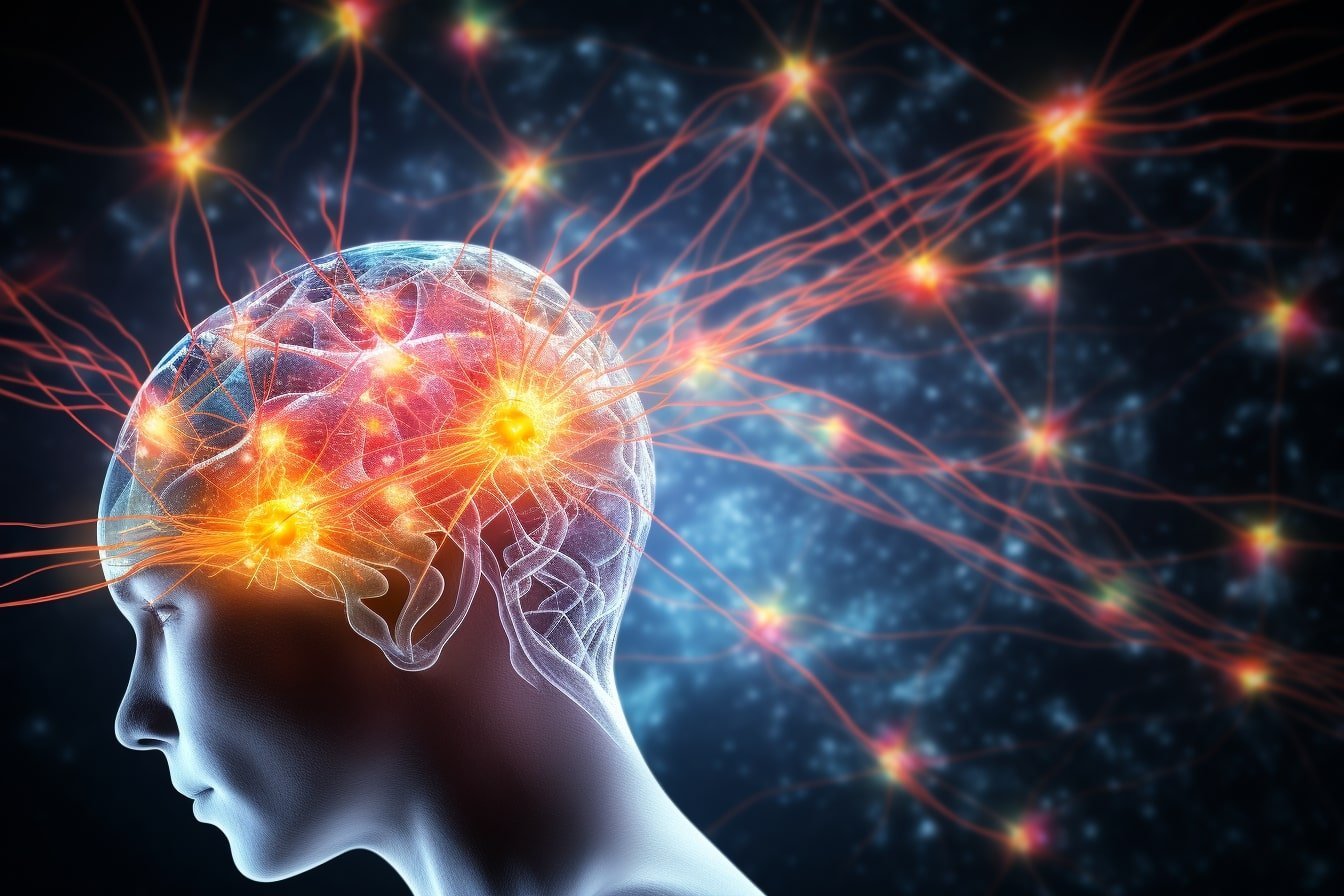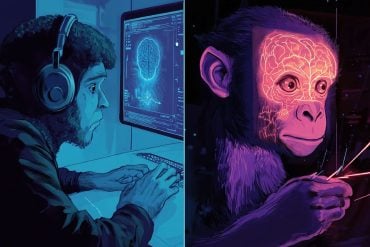Summary: A new study discovered age-related changes in brain patterns associated with the risk for developing schizophrenia.
Using a data-driven method known as Neuromark, the team analyzed functional MRI scans, genetic, and clinical measures from 9,236 individuals to determine alterations in brain network connectivity linked to genetic risk for schizophrenia. These alterations were observed in patients with schizophrenia, their neurotypical siblings, and those displaying under-threshold psychotic symptoms, particularly during late adolescence and early adulthood.
The findings could aid in early detection, improving treatment options, and offering potential biomarkers for schizophrenia development.
Key Facts:
- The study found age-related changes in brain connectivity associated with the risk for developing schizophrenia.
- A novel data-driven method called Neuromark was used to extract reliable brain networks from neuroimaging data of 9,236 individuals.
- The research discovered alterations in brain network connectivity linked to genetic risk for schizophrenia, providing potential biomarkers and improving early detection and treatment strategies.
Source: Georgia State University
New research led by scientists working with Georgia State University’s TReNDS Center has identified age-related changes in brain patterns associated with the risk for developing schizophrenia.
The discovery could help clinicians identify the risk for developing mental illness earlier and improve treatment options.

The study is published in the Proceedings of the National Academy of Sciences (PNAS).
The research is part of a collaboration by experts from the University of Bari Aldo Moro, the Lieber Institute of Brain Development and the Tri-institutional Center for Translational Research in Neuroimaging and Data Science (TReNDS) based at Georgia State University.
The study used new analytic approaches developed at the TReNDS center. Researchers used a hybrid, data-driven method called Neuromark to extract reliable brain networks from the neuroimaging data which were then further analyzed in the study.
Researchers started with functional MRI scans (fMRI) to detect age-related changes in brain connectivity and their association with schizophrenia risk. The research identified high-risk individuals for developing psychosis during late adolescence and early adulthood.
Using this novel approach to existing functional neuroimaging datasets led to a breakthrough in understanding both genetic and clinical risks for schizophrenia in the context of how brain regions communicate with each other.
“This study combined over 9,000 data sets using an approach which computes functional brain networks adaptively while also allowing us to summarize and compare across individuals,” said Distinguished University Professor Vince Calhoun, director of the TReNDS center.
“This led us to a really interesting result showing that genetic risk for schizophrenia is detectable in brain network interactions even for those who do not have schizophrenia, and this change reduces with age. These results also motivate us to do further investigation into the potential of functional brain network interactions to be used as an early risk detector.”
The team analyzed data from 9,236 individuals in different age stages acquired by the University of Bari Aldo Moro, the Lieber Institute of Brain Development, the U.K. Biobank, the Adolescent Brain Cognitive Development Study and the Philadelphia Neurodevelopmental Cohort. Using fMRI scans, genetic and clinical measures, they found that alterations in prefrontal-sensorimotor and cerebellar-occipitoparietal brain connections are linked to genetic risk for schizophrenia.
These alterations were observed in patients with schizophrenia, their neurotypical siblings and those displaying under-threshold psychotic symptoms.
Roberta Passiatore, a visiting fellow from the University of Bari Aldo Moro in Bari, Italy, and first author of the study, said researchers found alterations in the age-related network connectivity specifically during late adolescence and early adulthood. Schizophrenia symptoms typically develop early in life, often beginning in the mid-20s, with early onset occurring before 18.
The researchers found that younger individuals with increased risk have similar network connectivity as the brains seen in older patients. These findings could help identify a patient’s risk for developing disease later in life.
“Visiting TReNDS under the expert guidance of Professor Calhoun has been an exceptional experience. It provided me with a unique opportunity to develop an innovative approach that led to the discovery of a distinct brain signature for assessing the risk of schizophrenia by pooling multiple functional acquisitions,” Passiatore said.
“These findings trace a risk-related brain trajectory across multiple age stages with the potential to enhance our understanding of the disorder and to improve early diagnosis and intervention efforts, with a significant impact on the lives of at-risk individuals.”
The study highlights the importance of an age-oriented approach and leveraging multiple scans to identify risk in brain networks and potential genetic associations.
The findings could improve early detection and intervention strategies and offer potential biomarkers for investigating the role of specific genes and molecular pathways in developing schizophrenia.
The Translational Research in Neuroimaging and Data Science Center (TReNDS) is a collaboration among Georgia State University, the Georgia Institute of Technology and Emory University. It focuses on developing, applying and sharing advanced analytic approaches and neuroinformatic tools that leverage cutting-edge brain imaging and large-scale data analysis with a goal of translating these approaches into biomarkers that can help address relevant areas of brain health and disease.
Funding: This study was supported in part by National Institutes of Health grants R01MH118695 and R01MH123610.
About this schizophrenia research news
Author: Noelle Reetz
Source: Georgia State University
Contact: Noelle Reetz – Georgia State University
Image: The image is credited to Neuroscience News
Original Research: Closed access.
“Changes in patterns of age-related network connectivity are associated with risk for schizophrenia” by Vince Calhoun et al. PNAS
Abstract
Changes in patterns of age-related network connectivity are associated with risk for schizophrenia
Alterations in fMRI-based brain functional network connectivity (FNC) are associated with schizophrenia (SCZ) and the genetic risk or subthreshold clinical symptoms preceding the onset of SCZ, which often occurs in early adulthood.
Thus, age-sensitive FNC changes may be relevant to SCZ risk-related FNC. We used independent component analysis to estimate FNC from childhood to adulthood in 9,236 individuals.
To capture individual brain features more accurately than single-session fMRI, we studied an average of three fMRI scans per individual. To identify potential familial risk–related FNC changes, we compared age-related FNC in first-degree relatives of SCZ patients mostly including unaffected siblings (SIB) with neurotypical controls (NC) at the same age stage. Then, we examined how polygenic risk scores for SCZ influenced risk-related FNC patterns.
Finally, we investigated the same risk-related FNC patterns in adult SCZ patients (oSCZ) and young individuals with subclinical psychotic symptoms (PSY). Age-sensitive risk-related FNC patterns emerge during adolescence and early adulthood, but not before.
Young SIB always followed older NC patterns, with decreased FNC in a cerebellar–occipitoparietal circuit and increased FNC in two prefrontal–sensorimotor circuits when compared to young NC.
Two of these FNC alterations were also found in oSCZ, with one exhibiting reversed pattern. All were linked to polygenic risk for SCZ in unrelated individuals (R2 varied from 0.02 to 0.05). Young PSY showed FNC alterations in the same direction as SIB when compared to NC.
These results suggest that age-related neurotypical FNC correlates with genetic risk for SCZ and is detectable with MRI in young participants.






